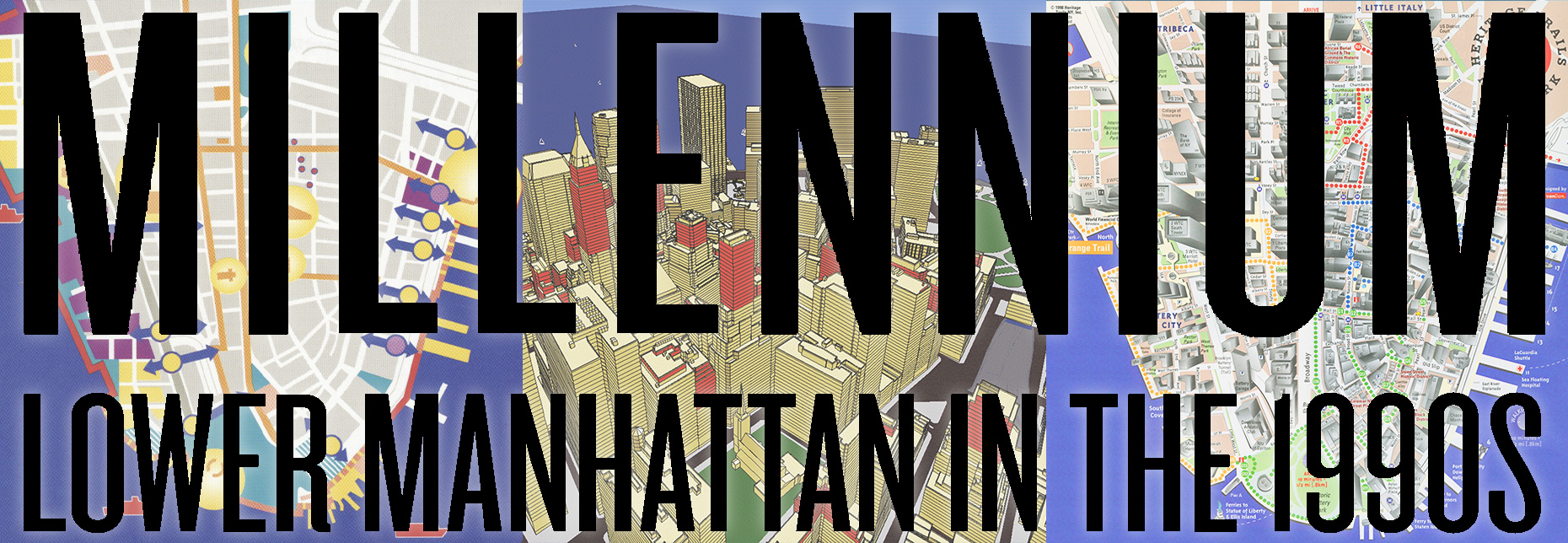The Skyscraper Museum is devoted to the study of high-rise building, past, present, and future. The Museum explores tall buildings as objects of design, products of technology, sites of construction, investments in real estate, and places of work and residence. This site will look better in a browser that supports web standards, but it is accessible to any browser or Internet device.
The last decade of the 20th century in New York City was not a simple time. The end of a millennium – a thousand-year marker – and the beginning of the 2000s prompted both anxiety and optimism, posing questions about what to retain from the past and how to move into the future.
No place in the mid-1990s was more conflicted about these prospects or more ripe for reinvention than lower Manhattan – especially the historic Financial District. Wall Street was losing banks to mergers and relocations. Grand skyscrapers of the 1910s and ‘20s were becoming technologically obsolete and sliding down-market. The lasting effect of the 1987 stock market crash, followed by the savings-and-loan scandals, caused a real estate recession that hit Downtown harder than other districts. Vacancy rates for office buildings topped 28 percent. New thinking and policies were necessary.
Preservation and reinvention were twin themes of the Downtown discussion. Landmarking and converting older office buildings to residential and other uses were strategies of economic development. Celebrating the district’s rich history and creating a culture for tourism was another initiative, led by Heritage Trails New York. Twenty years ago, the nascent Skyscraper Museum used the real estate recession to find free space for its first pop-up exhibitions in grand vacant banking halls at 44 Wall Street and 14 Wall. MILLENNIUM revisits this recent history of lower Manhattan in the years just before Downtown’s identity was cataclysmically recast as Ground Zero, and a new era truly began.
